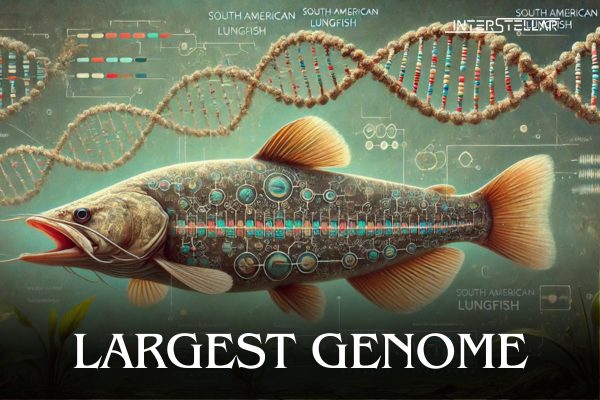The Remarkable South American Lungfish: A Living Fossil with the Largest Genome
The South American lungfish, Lepidosiren paradoxa, is an extraordinary creature that can be considered a living fossil. It inhabits the slow-moving and stagnant waters across Brazil, Argentina, Peru, Colombia, Venezuela, French Guiana, and Paraguay. As the closest living relative to the first land vertebrates, this species closely resembles its ancient ancestors, which date back more than 400 million years.
The Largest Genome in the Animal Kingdom
One of the most remarkable features of the South American lungfish is its genome size. This species holds the record for the largest genome among all animals on Earth. Scientists recently sequenced its genome, finding it to be approximately 30 times larger than that of humans.
The size of a genome is measured in base pairs, the fundamental units of DNA found in an organism’s cellular nuclei. To put this in perspective, if the DNA in each lungfish cell were stretched out, it would reach nearly 200 feet (60 metres) in length. In contrast, the human genome would extend only about 6.5 feet (2 metres).
According to evolutionary biologist Igor Schneider of Louisiana State University, the lungfish genome has undergone massive growth over the past 100 million years. During this time, it expanded by the equivalent of one human genome every 10 million years. Interestingly, 18 of the 19 chromosomes in the South American lungfish are each individually larger than the entire human genome.
Genomic Comparisons and Findings
Although the lungfish genome is immense, some plant species have even larger genomes. The current record holder is a fork fern species, Tmesipteris oblanceolata, found in New Caledonia, a French overseas territory in the Pacific. Its genome is more than 50 times the size of the human genome.
Prior to the South American lungfish’s genome being identified as the largest, the Australian lungfish (Neoceratodus forsteri) held the title of the largest-known animal genome. However, the South American lungfish’s genome is more than twice the size of its Australian relative. Notably, the other four lungfish species, which reside in Africa, also possess large genomes.
Lungfish genomes consist predominantly of repetitive elements, comprising about 90% of their total genetic material. Researchers suggest that the massive genome expansion observed in lungfish is related to a reduction in the mechanism that typically suppresses genomic repetition.
Schneider emphasised the significance of understanding the reasons behind the variation in genome sizes among animals. He stated that the study advances our knowledge of genome biology and structure by identifying the mechanisms that control genome size while maintaining chromosome stability.
A Glimpse into Evolutionary History
The South American lungfish can grow up to about 4 feet (1.25 metres) in length. Unlike other fish that rely solely on gills for breathing, lungfish also possess lung-like organs, allowing them to breathe air. This adaptation enables them to survive in the oxygen-depleted, swampy environments of the Amazon and Parana-Paraguay River basins by supplementing the oxygen obtained from water with air.
Lungfish first appeared during the Devonian Period, a critical time in the history of life on Earth. During this period, fish with lungs and muscular fins evolved into the first tetrapods, the four-limbed vertebrates that eventually gave rise to amphibians, reptiles, birds, and mammals.
Since the ancestors of today’s lungfish were closely related to these early tetrapods, studying their genomes provides valuable insights into how vertebrates evolved essential features for life on land, such as limbs. For example, researchers have shown that the genetic machinery controlling the Sonic Hedgehog (Shh) gene, which plays a crucial role in embryonic development, likely influenced the formation of bony digits in lungfish fins. These digits eventually evolved into fingers and toes in tetrapods.
Schneider pointed out that tetrapod ancestors conquered land with limbs that evolved from fins and were already breathing air through lungs. He stressed that only by studying the surviving lungfish lineages can we investigate the genomic and molecular mechanisms that facilitated this transition from water to land for vertebrates.





